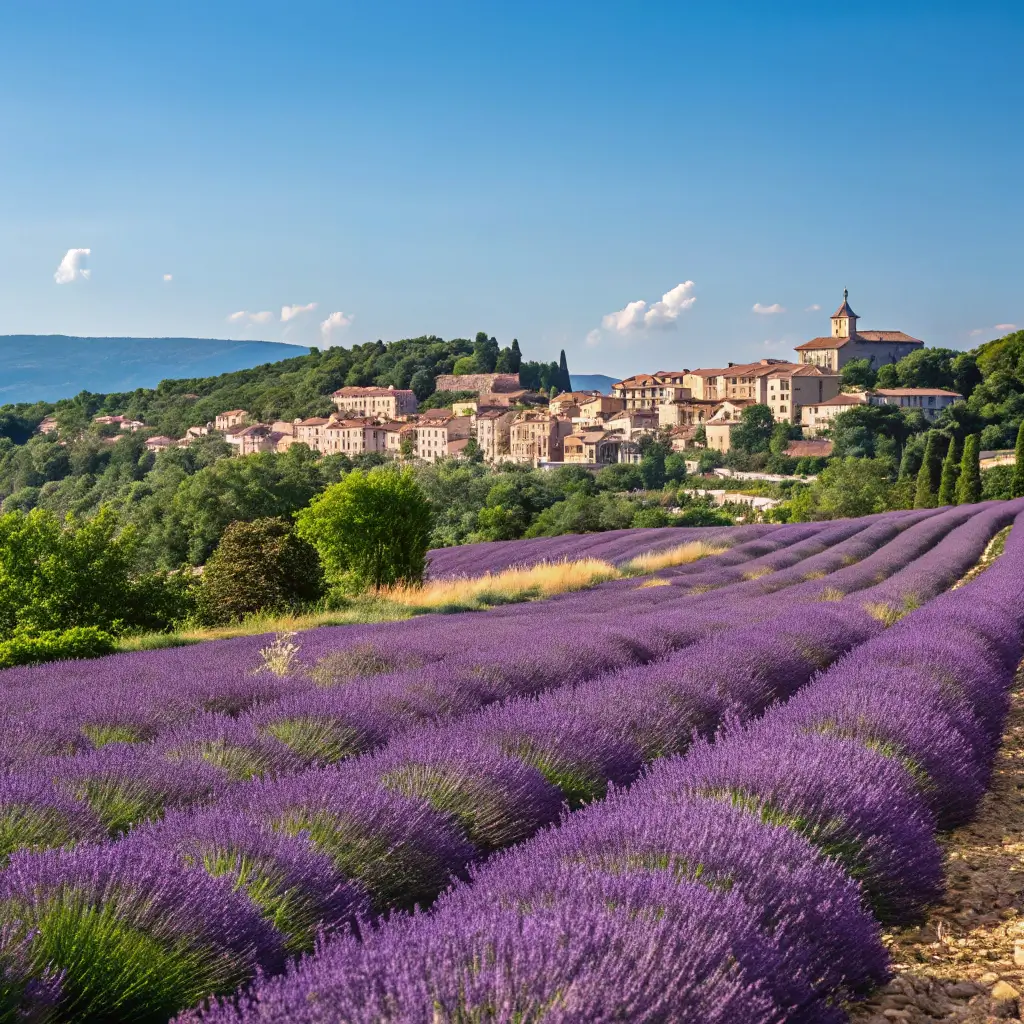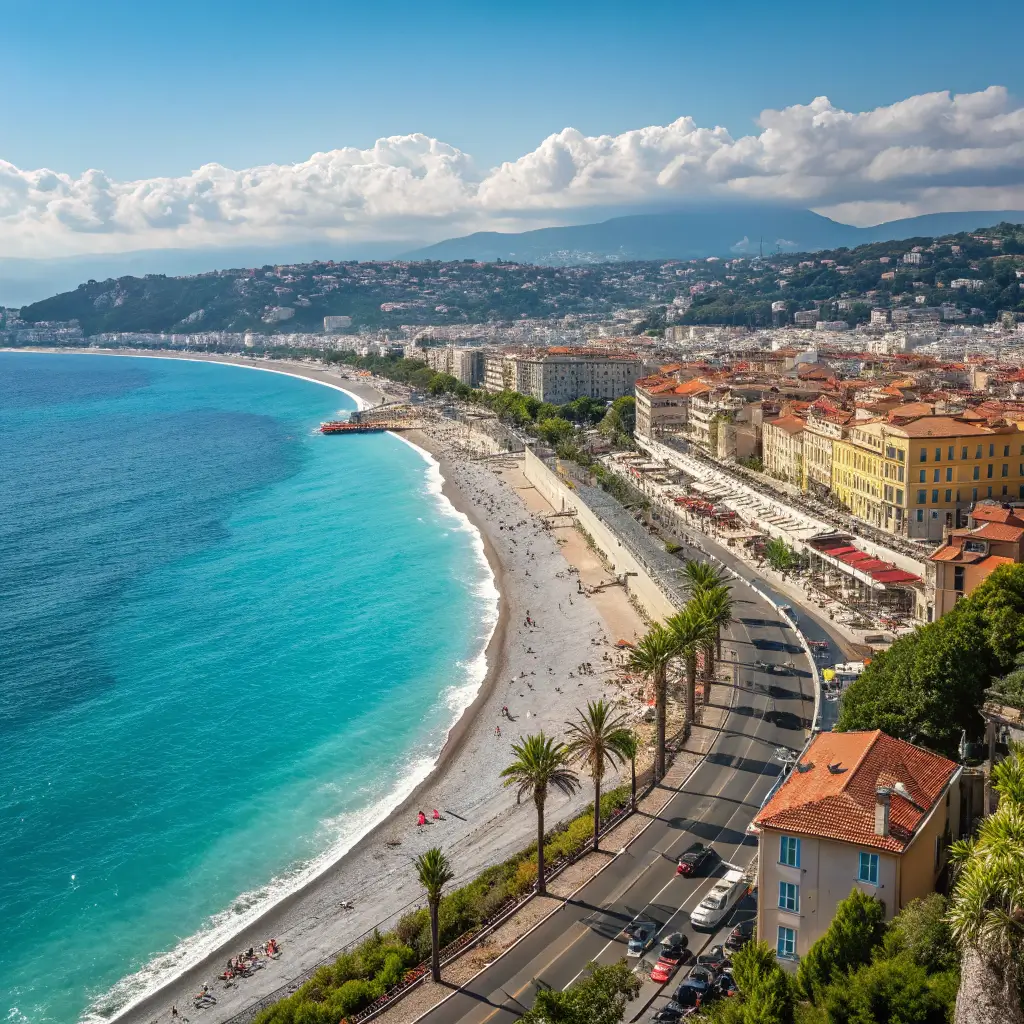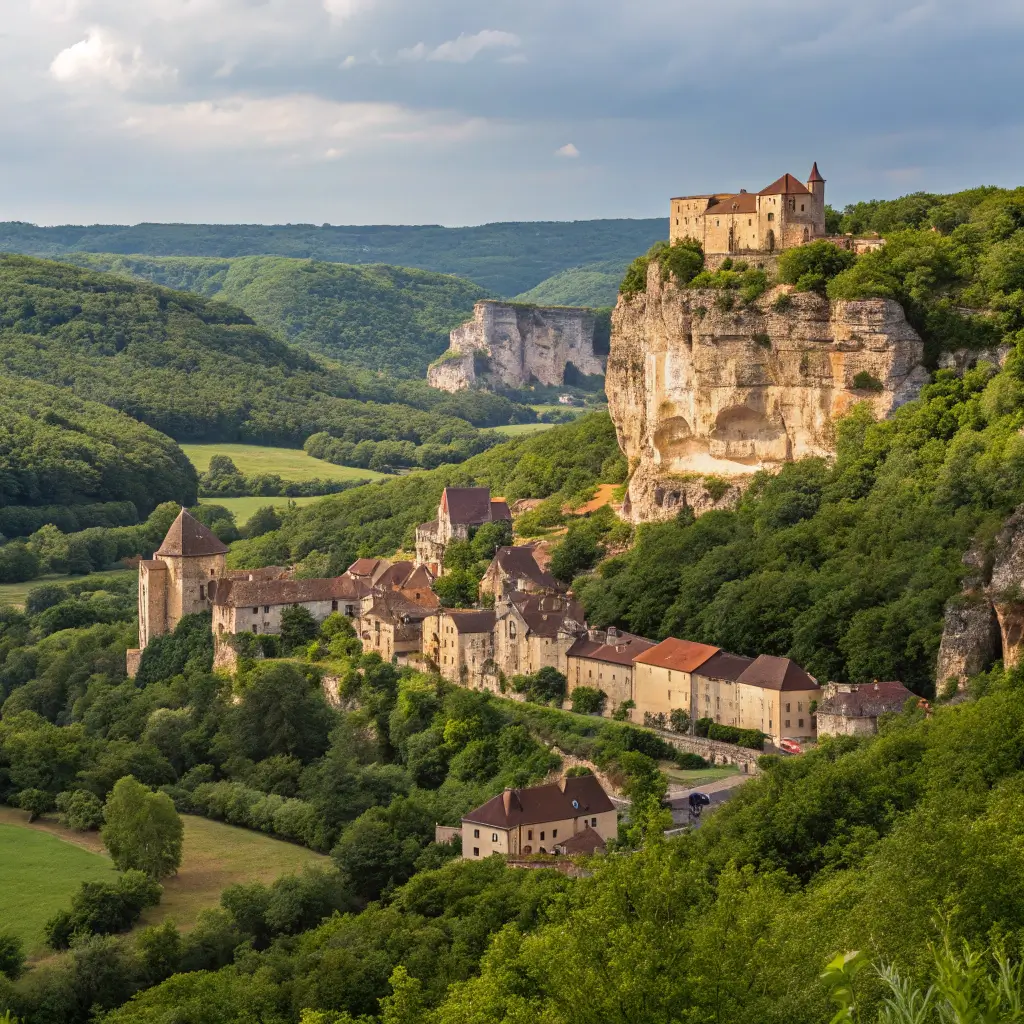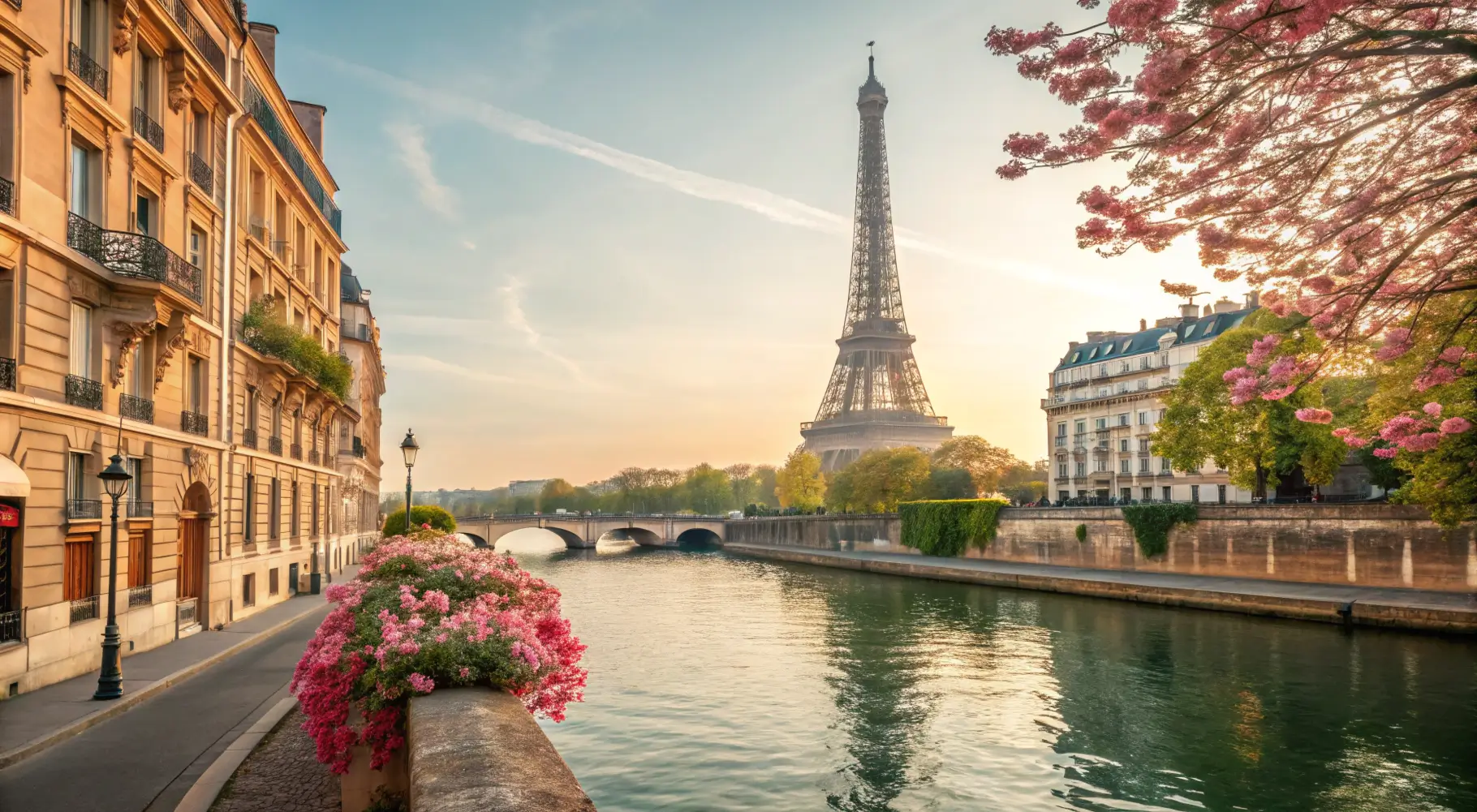France is a diverse and captivating destination. Each region offers unique experiences. From historical landmarks to culinary delights, there’s something for everyone. This article serves as a comprehensive guide for planning your trip to best areas to visit in france . Discover beyond the typical tourist hotspots. Ideal for travelers seeking authentic experiences and insider tips.
Table of Contents
Paris: The Iconic Capital and Beyond
Paris is undeniably a must-see destination for any traveler. The city is rich in history, culture, and stunning architecture.

Iconic Landmarks
Don’t miss the Eiffel Tower, a symbol of France. The Louvre Museum houses thousands of artworks, including the Mona Lisa. Notre-Dame Cathedral, though under restoration, remains a breathtaking sight.
Less Crowded Experiences
Explore the artistic streets of Montmartre for a local vibe. Enjoy a picnic along the Seine River for a relaxing afternoon. Visit smaller museums like the Musée de l’Orangerie for a quieter experience.
Nearby Day Trip Options
Consider a day trip to the opulent Palace of Versailles. Giverny, home to Monet’s gardens, offers a picturesque escape from the city.
Provence: Lavender Fields, Charming Villages, and Roman History
Provence is a stunning region in southeastern France known for its picturesque landscapes and rich history. The vibrant lavender fields bloom in summer, creating a breathtaking sight. Charming villages dot the countryside, each with unique character and charm.
Key Attractions
Lavender fields are a seasonal highlight, best visited from late June to early August. Avignon is home to the historic Palace of the Popes, a UNESCO World Heritage site. Arles boasts a well-preserved Roman amphitheater, showcasing ancient architecture. Aix-en-Provence is a cultural hub, famous for its art scene and lively markets.
Suggested Activities
Enjoy wine tasting in the Rhône Valley, sampling exquisite local vintages. Hike in the stunning Alpilles mountains for breathtaking views. Explore local markets to experience authentic French cuisine and regional specialties. best areas to visit in france
The French Riviera: Glamour, Beaches, and Azure Waters
The French Riviera, or Côte d’Azur, is a stunning stretch of coastline known for its glamour and beauty. This region attracts travelers with its azure waters and vibrant culture.
Key destinations include:
- Nice: Famous for its Promenade des Anglais and vibrant markets.
- Cannes: Renowned for its film festival and luxury boutiques.
- Monaco: A playground for the rich, featuring the iconic Monte Carlo Casino.
- Saint-Tropez: A hotspot for celebrities and known for its lively beach clubs.
Activities to enjoy:
- Lounging on the beach and soaking up the sun.
- Exploring the old towns with their charming streets.
- Visiting art museums like the Matisse Museum in Nice.
- Indulging in fine dining at world-class restaurants.

The Loire Valley: Castles, Vineyards, and Royal History
The Loire Valley, often referred to as the ‘Garden of France,’ is celebrated for its stunning châteaux and lush vineyards.
Key châteaux to explore include:
- Château de Chambord: A masterpiece of Renaissance architecture.
- Château de Chenonceau: Known for its beautiful gardens and history.
- Château de Villandry: Famous for its exquisite gardens.
Activities to consider:
- Wine tasting in the picturesque vineyards.
- Cycling along the scenic Loire River.
- Exploring charming towns like Amboise.
The region is steeped in history, closely linked to the French monarchy, making it a must-see destination in France.
Bordeaux: Wine Capital and Architectural Gem
Bordeaux is a world-renowned wine region. Key attractions include the Cité du Vin, a fascinating wine museum, and the stunning Place de la Bourse. Exploring the historic city center reveals beautiful architecture and vibrant culture. Activities to enjoy are wine tours and tastings, exploring the surrounding vineyards, and savoring local cuisine. Consider day trips to nearby coastal towns like Arcachon for a complete experience. best areas to visit in france
Brittany: Rugged Coastline, Celtic Heritage, and Seafood Delights
Brittany boasts a unique character with its rugged coastline and rich Celtic heritage. Key attractions include Mont-Saint-Michel, the Pink Granite Coast, and the walled city of Saint-Malo. Activities to consider are hiking along the coastal paths (GR34), exploring medieval towns, and enjoying fresh seafood. The region’s Celtic heritage and language add to its charm.

Alsace: Fairytale Villages, Wine Route, and German Influences
Alsace offers a distinctive atmosphere with its half-timbered houses and vibrant flower displays. Key attractions include Strasbourg, the capital, known for its stunning cathedral, and Colmar, famous for its picturesque canals. The Alsace Wine Route is a must-visit, featuring charming villages like Riquewihr and Eguisheim. Activities include wine tasting, exploring the villages, and visiting seasonal Christmas markets. The region beautifully blends French and German cultures, evident in its cuisine and architecture.
Hidden Gems and Underrated Regions
Discover less-known yet captivating regions of France. Dordogne boasts prehistoric caves, medieval castles, and picturesque villages. Auvergne features volcanic landscapes, hiking trails, and thermal springs. Corsica offers rugged mountains, beautiful beaches, and a unique culture. Each region provides a distinct experience, perfect for adventurous travelers. best areas to visit in france
Planning Your Trip to France: Practical Tips
Essential travel information includes the best time to visit, typically spring and fall for pleasant weather and fewer crowds. Transportation options range from trains to rental cars. Accommodation recommendations include hotels, guesthouses, and vacation rentals. Budgeting tips suggest planning for meals, attractions, and transport. Check visa and entry requirements based on your nationality. Useful resources include official tourism websites and travel blogs for additional insights.
Conclusion: Embrace the Diversity of France
France offers diverse travel experiences, from fairytale villages to hidden gems. Each region has unique attractions waiting to be explored. Embrace the rich culture, history, and cuisine. Start planning your French adventure today!

FAQs: Your Questions About Visiting France Answered
Q1:What is the best time of year to visit France?
The best time to visit France depends on what you want from your trip, but generally:
🌸 Spring (April to June) – Best Overall
Why: Mild weather, blooming gardens, fewer tourists than summer.
Highlights: Paris parks in bloom, Loire Valley châteaux, wine country tours.
Ideal for: Sightseeing, outdoor cafés, photography.
☀️ Summer (July to August) – Best for Festivals & Beaches
Why: Warmest weather, long days, many festivals.
Caveat: Crowded and more expensive; locals often go on vacation.
Ideal for: The Riviera, lavender fields in Provence, Bastille Day events.
🍂 Fall (September to October) – Best for Wine & Fewer Crowds
Why: Grape harvest season, pleasant weather, fewer tourists.
Highlights: Burgundy and Bordeaux wine tours, cultural events.
Ideal for: Food and wine lovers, scenic countryside drives.
❄️ Winter (November to March) – Best for Skiing & Christmas Markets
Why: Fewer crowds, cheaper prices, festive cities.
Highlights: Alps skiing, Strasbourg’s Christmas market, Paris museums.
Ideal for: Budget travelers, winter sports, cozy city stays.
Q2:What are some of the most popular tourist attractions in France?
France is filled with iconic landmarks and cultural treasures. Here are some of the most popular tourist attractions across the country:
🇫🇷 Top Tourist Attractions in France
🗼 1. Eiffel Tower (Paris)
Symbol of France and must-see in Paris.
Best views from the Trocadéro or top of the tower.
🖼️ 2. Louvre Museum (Paris)
World’s largest art museum.
Home to the Mona Lisa and Venus de Milo.
🕍 3. Palace of Versailles
Extravagant royal palace with stunning gardens.
A UNESCO World Heritage site, just outside Paris.
⛪ 4. Notre-Dame Cathedral (Paris)
Masterpiece of Gothic architecture (under restoration after the 2019 fire).
Still viewable from the Seine.
🏰 5. Mont Saint-Michel (Normandy)
A magical island abbey with medieval streets and sea views.
One of France’s most photographed landmarks.
💜 6. Lavender Fields (Provence)
Stunning fields bloom from mid-June to early August.
Great for photos and local products like lavender oil.
🥖 7. French Riviera (Côte d’Azur)
Glamorous beaches and towns like Nice, Cannes, and Monaco.
Famous for luxury, sunshine, and the Mediterranean vibe.
🏔️ 8. Chamonix-Mont-Blanc (Alps)
Top destination for skiing, hiking, and stunning alpine views.
Site of the first Winter Olympics.
🍷 9. Bordeaux & Burgundy Wine Regions
Ideal for vineyard tours and tastings.
Explore French countryside, cuisine, and heritage.
🏛️ 10. Sainte-Chapelle (Paris)
Lesser-known gem with breathtaking stained glass.
Located on Île de la Cité, near Notre-Dame.
✨ Bonus Attractions
D-Day Beaches (Normandy) – WWII history buffs.
Loire Valley Châteaux – Castles, gardens, and Renaissance architecture.
Disneyland Paris – Fun for families and Disney fans.
Q3:What is the best way to get around France?
The best way to get around France depends on your itinerary, budget, and travel style. Here’s a breakdown of the top options:
🚄 1. Train – Fast, Scenic, and Reliable
Best for: City-to-city travel (e.g., Paris to Lyon, Bordeaux, Nice).
TGV (Train à Grande Vitesse): France’s high-speed trains – very fast and comfortable.
Regional trains (TER): Great for smaller towns and rural areas.
Passes: Consider a Eurail Pass or France Rail Pass if visiting multiple cities.
✅ Top Tip: Book TGV tickets early for the best prices via SNCF or Oui.SNCF.
🚗 2. Car Rental – Freedom in the Countryside
Best for: Exploring rural regions like Provence, the Loire Valley, Normandy, or the Alps.
Pros: Flexibility, access to villages, scenic drives.
Cons: Parking in cities can be tricky; toll roads can be costly.
✅ Top Tip: Use a GPS or offline maps – and know that manual cars are more common than automatics.
✈️ 3. Domestic Flights – Time-Saving for Long Distances
Best for: Reaching far-flung destinations quickly (e.g., Paris to Nice or Corsica).
Airlines: Air France, easyJet, Transavia.
Note: Not ideal for short trips due to airport transfers and check-in time.
🚌 4. Long-Distance Buses – Budget-Friendly
Best for: Affordable travel between major towns and cities.
Companies: FlixBus, BlaBlaBus.
Pros: Cheap tickets, many routes.
Cons: Slower than trains, less comfort.
🚇 5. Public Transportation in Cities
Metro, Bus, Tram: Paris, Lyon, Marseille, and other major cities have excellent public transit.
Bike Sharing: Cities like Paris (Vélib’) have great bike rental options.
🚕 6. Rideshare & Taxis
Uber and Bolt are available in major cities.
BlaBlaCar: Popular for intercity carpooling with locals.
✅ Best Combination
Train + Car: Use trains between cities, then rent a car to explore the countryside.
Metro in Cities: Skip the car in Paris – metro is faster and more convenient.
Q4:What is the typical budget for a trip to France?
The typical budget for a trip to France can vary widely based on travel style, season, and destinations. Here’s a rough daily cost breakdown to help you plan:
💸 Estimated Daily Budget by Travel Style
Travel Style
Budget (per person/day)
Description
Budget
€60–€100
Hostels, street food, public transport
Mid-range
€120–€200
3-star hotels, bistros, intercity trains
Luxury
€250–€500+
4–5-star hotels, fine dining, private tours
✈️ Sample 7-Day Trip Cost (Mid-Range)
Expense Category
Estimated Cost (per person)
Flights (RT)
€400–€800 (from US/UK)
Accommodation
€600–€1,000 (€90–€140/night)
Food & Drink
€250–€350
Transportation
€100–€200 (train, metro)
Attractions/Tours
€100–€200
Miscellaneous
€50–€100
Total
€1,500–€2,650
🏨 Accommodation Costs (per night)
Hostel: €25–€50
Budget hotel/Airbnb: €70–€100
Mid-range hotel: €120–€180
Luxury hotel: €250–€500+
🍽️ Food & Drink
Croissant & coffee: €4–€6
Casual lunch: €10–€20
Dinner at a bistro: €20–€40
Fine dining: €60–€150+
🎟️ Attractions & Sightseeing
Eiffel Tower: €20–€30
Louvre Museum: €17
Versailles Palace: €18–€30
Museum Pass (2-day): ~€55
💡 Money-Saving Tips
Buy a Paris Museum Pass for attraction discounts.
Use public transport instead of taxis.
Picnic with groceries from local markets.
Travel in shoulder season (May–June or September–October) for better deals.
Q5:What are some must-try foods in France?
France is a paradise for food lovers, and trying local dishes is a highlight of any trip. Here are some must-try French foods by category:
🥖 Breads & Pastries
Baguette – Crisp, golden crust with soft inside. Found at every bakery.
Croissant – Flaky, buttery pastry. Try an almond or chocolate croissant (pain au chocolat).
Pain au chocolat – A croissant-style pastry filled with dark chocolate.
🧀 Cheese (Fromage)
Camembert – Soft, creamy, and slightly earthy.
Brie – Mild and creamy; pairs well with baguette and wine.
Roquefort – Strong blue cheese aged in caves.
Chèvre – Goat cheese, often served warm on salad.
🧀 France has over 400 types of cheese – try a local cheese plate (plateau de fromage).
🍲 Main Dishes
Coq au Vin – Chicken braised in red wine with mushrooms and onions.
Boeuf Bourguignon – Beef stew slow-cooked in Burgundy wine.
Duck Confit (Confit de Canard) – Crispy, slow-cooked duck leg.
Ratatouille – Vegetable medley from Provence (vegan-friendly).
Steak Frites – Steak served with crispy French fries.
🥐 Regional Specialties
Bouillabaisse (Marseille) – Seafood stew with saffron and rouille.
Quiche Lorraine (Northeast) – Savory tart with eggs, cream, and bacon.
Tartiflette (Alps) – Potatoes, cheese (reblochon), and lardons baked together.
Cassoulet (Southwest) – Hearty white bean and meat stew.
🥗 Snacks & Starters
French Onion Soup – Rich broth with caramelized onions, bread, and melted cheese.
Escargots – Snails in garlic-parsley butter (surprisingly delicious!).
Foie Gras – Rich duck or goose liver pâté, often served with toast or jam.
Charcuterie – A board of cured meats, pâtés, pickles, and cheese.
🍮 Desserts
Crème Brûlée – Custard topped with a crackly sugar crust.
Tarte Tatin – Upside-down caramelized apple tart.
Macarons – Delicate almond meringue cookies with ganache filling.
Éclair – Choux pastry filled with cream and topped with icing.
Madeleines – Soft shell-shaped sponge cakes.
🍷 Drinks
French wine – Try Bordeaux, Burgundy, Champagne, or Rosé from Provence.
Café au lait – Popular breakfast coffee with milk.
Cidre (Normandy) – Sparkling apple cider, often served with crepes.


